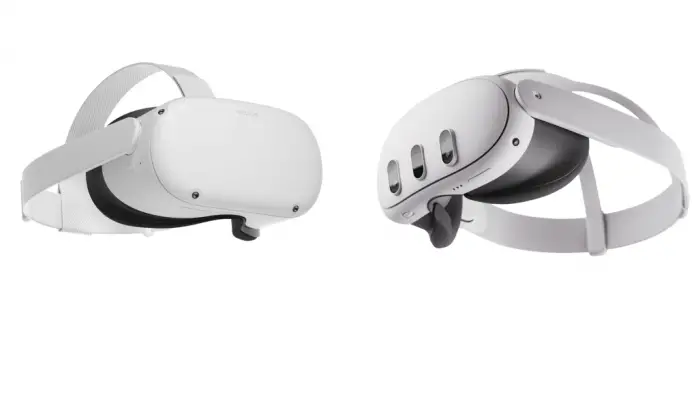With such an enticing pricing point on Quest 2 over Black Friday, it’s no surprise that the headset sold more than Quest 3. But what does this signify for the company’s attempt to make mixed reality the primary selling point of its headsets?
JustDaven, a Twitter user, pointed out that Amazon publishes some rough sales data in some circumstances, notably for Quest 2 and Quest 3. We thought it would be fun to check at all of the big Amazon areas where Quests are sold to see how the statistics stack up.
Meta has sold around 240,000 Quest headsets throughout all main Amazon markets (only one of many locations where the headset is offered). What’s more remarkable than the actual statistic is that Quest 2 outsells Quest 3 nearly three to one.

Despite the fact that Quest 3 is the hot new model garnering all the attention, it’s not shocking how this happened.
The Quest 2 had a really good Black Friday deal, with a sticker price of $250, plus a $50 gift card (effectively pricing it at $200). In comparison, the lowest sticker price for Quest 3 was $500, which included a $15 gift card and a copy of Asgard’s Wrath 2 (effectively priced it at $425).
People will naturally wonder, “At twice the price of Quest 2, is Quest 3 twice as good?” given the Black Friday sticker pricing ($250 vs. $500).
What It Means
In any event, so far this Christmas season, the less expensive headset looks to be the clear victor. But what does this mean for Meta, which has been attempting with its previous two headsets to go from pure VR to mixed reality?

Meta has promoted mixed reality as the principal use for the Quest Pro and Quest 3. But, while developers take their time developing killer apps and use-cases for mixed reality, a new wave of Quest 2 users is on the way—a headset that only barely enables mixed reality experiences with a grainy black-and-white vision.
This presents a difficult choice for developers: do they design for the new-fangled headsets with their increased power, enhanced graphics, and vastly improved mixed reality capabilities? Or should you target the considerably bigger audience of Quest 2 users?
This is always the case when game makers must decide whether to move their emphasis to a next-generation gaming system. But this is not the case.
There is no major difference between PS4 and PS5, for example, as compared to the difference in mixed reality capabilities between Quest 2 and Quest 3. It’s really simple for developers to create a single game and optimize it for both the PS4 and PS5.
That may be said about Quest 2 and Quest 3, but only if we’re talking about pure VR apps.
However, a great mixed reality game designed for Quest 3 will struggle to provide a good experience on Quest 2; not only because of the lower resolution and black-and-white passthrough view, but also because Quest 2 lacks a depth-sensor—a critical component for creating reasonably accurate maps of the player’s environment in order to truly mix the virtual and real worlds.
Quest 2 has been out for three years. That’s not a long time for a console generation, but it’s a long time in the far faster-moving world of standalone VR headsets.
A fresh wave of users for the previous model headset will unavoidably stymie the transfer to the next version. That implies developers will devote more time to the larger Quest 2 audience, leaving Quest Pro and Quest 3 with less content that actually addresses their major differentiator of higher quality mixed reality.

Since Quest Pro, Meta has emphasized mixed reality in their Quest marketing, giving users the impression that there is plenty of outstanding mixed reality content for the devices. But, as things now stand, that is far from the case. Mixed reality games and applications are still in their infancy, with the majority just adding a passthrough backdrop to an existing game. While this may improve the games in certain circumstances, it does not fully use the mixed reality features of the headsets.
So, although Meta appears to want developers to speed their move to Quest Pro and Quest 3’s special features, the market appears to want them to slow down. This puts the platform and its developers at conflict, with users caught in the middle.


